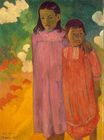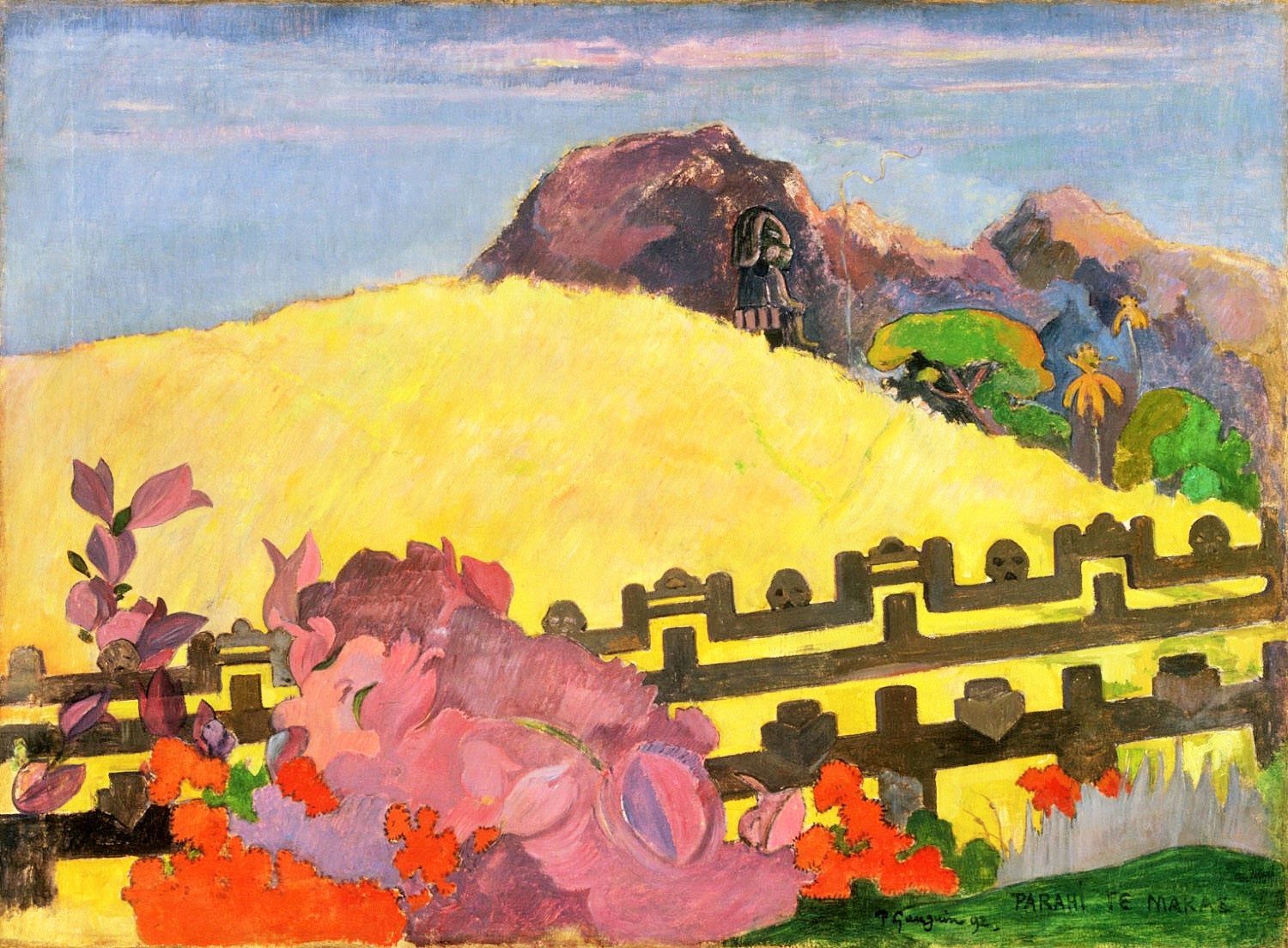Paul Gauguin - The sacred mountain 1892
 |
 |
 |
 |
 |
 |
 |

The sacred mountain 1892
69x89cm oil/canvas
Philadelphia Museum of Art, Philadelphia, PA, USA
The image is only being used for informational and educational purposes
<< Previous G a l l e r y Next >>
From Masterpieces from the Philadelphia Museum of Art: Impressionism and Modern Art:
Gauguin's first trip to Tahiti in 1891 marked the end of a difficult period in his career, one fraught with financial difficulties and marred by the death of his friend Vincent van Gogh. A trip to the South Seas offered the possibility of escape and a tropical paradise in which to reinvigorate his flagging painting career. Gauguin's Tahitian paintings were received coolly when they were exhibited in Paris on his return in 1893, but today they are regarded as magical works layered in myths of his own invention. This painting shows a marae, or sacred enclosure, in the Marquesas Islands. Gauguin's original title for the work---There is the Marae (Temple of Prayers and Sacrifices)---alludes to the legend that children were sacrificed there, but the setting is a fanciful creation of the artist, who assembled it from diverse objects. An idol similar to those from Easter Island, five thousand miles from Tahiti, stands alone on a hill, while a fence enclosing the sacred space is decorated with skulls and patterns inspired by the ear plugs worn by Maori women two thousand miles to the west. The picture's exotic subject is matched by an appealing use of tropical flora, bright colors, and flattened forms worked with hatched brushstrokes.
Jennifer A. Thompson, from Masterpices from the Philadelphia Museum of Art: Impressionism and Modern Art (2007), p. 92.